Analytical Model of Heating an Isotropic Half-Space by a Moving Laser Source with a Gaussian Distribution
Abstract
:1. Introduction
2. Problem Statement
3. Solution Method
4. Results
5. Conclusions
Author Contributions
Funding
Institutional Review Board Statement
Informed Consent Statement
Data Availability Statement
Conflicts of Interest
References
- Mirkoohi, E.; Dobbs, J.R.; Liang, S.Y. Analytical mechanics modeling of in-process thermal stress distribution in metal additive manufacturing. J. Manuf. Process. 2020, 58, 41–45. [Google Scholar] [CrossRef]
- Babaytsev, A.; Dobryanskiy, V.; Solyaev, Y. Optimization of Thermal Protection Panels Subjected to Intense Heating and Mechanical Loading. Lobachevskii J. Math. 2019, 40, 887–895. [Google Scholar] [CrossRef]
- Fergani, O.; Berto, F.; Welo, T.; Liang, S.Y. Analytical modelling of residual stress in additive manufacturing. Fatigue Fract. Eng. Mater. Struct. 2017, 40, 971–978. [Google Scholar] [CrossRef]
- Tushavina, O.V. Coupled heat transfer between a viscous shock gasdynamic layer and a transversely streamlined anisotropic half-space. INCAS Bull. 2020, 12, 211–220. [Google Scholar] [CrossRef]
- Pronina, P.F.; Sun, Y.; Tushavina, O.V. Mathematical modelling of high-intensity heat flux on the elements of heat-shielding composite materials of a spacecraft. J. Appl. Eng. Sci. 2020, 18, 693–698. [Google Scholar] [CrossRef]
- Kruth, J.; Deckers, J.; Yasa, E.; Wauthlé, R. Assessing and comparing influencing factors of residual stresses in selective laser melting using a novel analysis method. Proc. Inst. Mech. Eng. Part B J. Eng. Manuf. 2012, 226, 980–991. [Google Scholar] [CrossRef]
- Matevossian, H.; Nordo, G.; Vestyak, A. Behavior of Solutions of the Cauchy Problem and the Mixed Initial Boundary Value Problem for an Inhomogeneous Hyperbolic Equation with Periodic Coefficients. In Developments and Novel Approaches in Nonlinear Solid Body Mechanics, Chapter 4, Advanced Structured Materials; Springer: Cham, Switzerland, 2020; Volume 130, pp. 29–35. [Google Scholar]
- Matevossian, H.; Vestyak, A.; Peshcherikova, O. On the behavior of solutions of the initial boundary value problems for the hyperbolic equation with periodic coefficients. Math. Notes 2018, 104, 762–766. [Google Scholar] [CrossRef]
- Vestyak, A.; Matevossian, H. On the behavior of the solution of the Cauchy problem for an inhomogeneous hyperbolic equation with periodic coefficients. Math. Notes 2017, 102, 424–428. [Google Scholar] [CrossRef]
- Vestyak, A.; Matevossian, H. On the behavior of the solution of the Cauchy problem for a hyperbolic equation with periodic coefficients. Math. Notes 2016, 100, 751–754. [Google Scholar] [CrossRef]
- Mikhailova, E.; Fedotenkov, G.; Tarlakovskii, D. Impact of Transient Pressure on a Half-Space with Membrane Type Coating. Struct. Integr. 2020, 16, 312–315. [Google Scholar]
- Fedotenkov, G.; Tarlakovskii, D. Non-stationary Contact Problems for Thin Shells and Solids. Struct. Integr. 2020, 16, 287–292. [Google Scholar]
- Okonechnikov, A.; Fedotenkov, G.; Tarlakovskii, D. Spatial non-stationary contact problem for a cylindrical shell and absolutely rigid body. Mech. Solids 2020, 55, 366–376. [Google Scholar] [CrossRef]
- Fedotenkov, G.V.; Mikhailova, E.Y.; Kuznetsova, E.L.; Rabinskiy, L.N. Modeling the unsteady contact of spherical shell made with applying the additive technologies with the perfectly rigid stamp. Int. J. Pure Appl. Math. 2016, 111, 331–342. [Google Scholar] [CrossRef] [Green Version]
- Igumnov, L.A.; Okonechnikov, A.S.; Tarlakovskii, D.V.; Fedotenkov, G.V. Plane Nonstationary Problem of Motion of the Surface Load Over an Elastic Half Space. J. Math. Sci. 2014, 203, 193–201. [Google Scholar] [CrossRef]
- Tarlakovskiy, D.V.; Fedotenkov, G.V. Analytic investigation of features of stresses in plane nonstationary contact problems with moving boundaries. J. Math. Sci. 2009, 162, 246–253. [Google Scholar] [CrossRef]
- Hou, Z.B.; Komanduri, R. General solutions for stationary/moving plane heat source problems in manufacturing and tribology. Int. J. Heat Mass Transf. 2020, 43, 1679–1698. [Google Scholar] [CrossRef]
- Ramos-Grez, J.A.; Sen, M. Analytical, quasi-stationary wilson-rosenthal solution for moving heat sources. Int. J. Therm. Sci. 2019, 140, 455–465. [Google Scholar] [CrossRef]
- Ghosh, A.; Chattopadhyay, H. Mathematical modeling of moving heat source shape for submerged arc welding process. Int. J. Adv. Manuf. Technol. 2013, 69, 2691–2701. [Google Scholar] [CrossRef]
- Parkitny, R.; Winczek, J. Analytical solution of temporary temperature field in half-infinite body caused by moving tilted volumetric heat source. Int. J. Heat Mass Transf. 2013, 60, 469–479. [Google Scholar] [CrossRef]
- Komanduri, R.; Hou, Z.B. Thermal analysis of the arc welding process: Part I. general solutions. Metall. Mater. Trans. B Process. Metall. Mater. Process. Sci. 2000, 31, 1353–1370. [Google Scholar] [CrossRef]
- Komanduri, R.; Hou, Z.B. Thermal analysis of the arc welding process: Part II. effect of variation of thermophysical properties with temperature. Metall. Mater. Trans. B Process. Metall. Mater. Process. Sci. 2001, 32, 483–499. [Google Scholar] [CrossRef]
- Nguyen, N.T.; Ohta, A.; Matsuoka, K.; Suzuki, N.; Maeda, Y. Analytical solutions for transient temperature of semi-infinite body subjected to 3-D moving heat sources. Weld. J. (Miami Fla) 1999, 78, 265–274. [Google Scholar]
- Kim, C.K. An analytical solution to heat conduction with a moving heat source. J. Mech. Sci. Technol. 2011, 25, 895–899. [Google Scholar] [CrossRef]
- Salimi, S.; Bahemmat, P.; Haghpanahi, M. An analytical solution to the thermal problems with varying boundary conditions around a moving source. Appl. Math. Model. 2016, 40, 6690–6707. [Google Scholar] [CrossRef]
- Araya, G.; Gutierrez, G. Analytical solution for a transient, three-dimensional temperature distribution due to a moving laser beam. Int. J. Heat Mass Transf. 2006, 49, 4124–4131. [Google Scholar] [CrossRef]
- Carslaw, H.; Jaeger, J. Conduction of Heat in Solids, 2nd ed.; Clarendon Press: Oxford, UK, 1959. [Google Scholar]
- Lykov, A. Teoriya Teploprovodnosti; Vysshaya Shkola: Moscow, Russia, 1967. [Google Scholar]

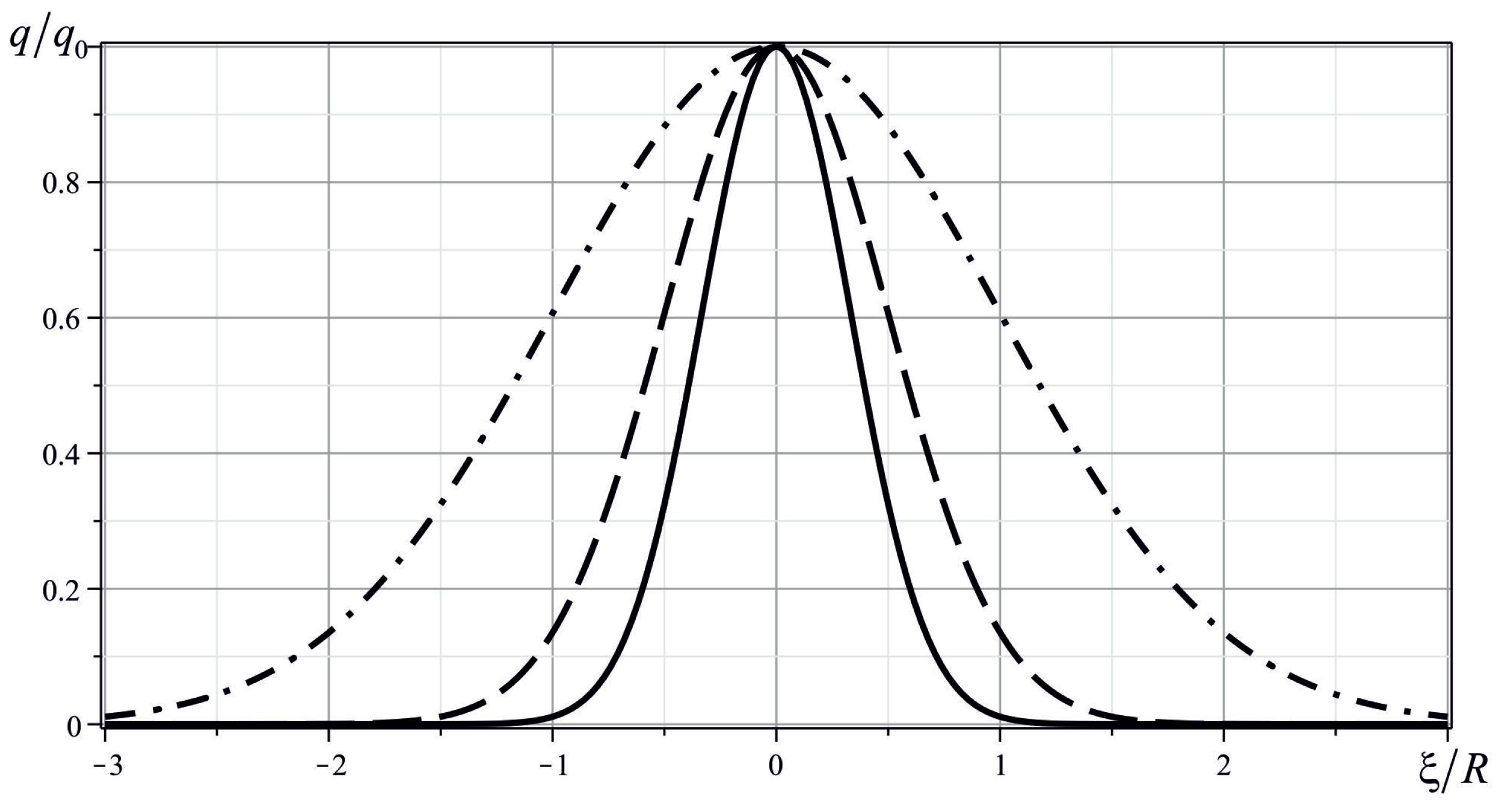

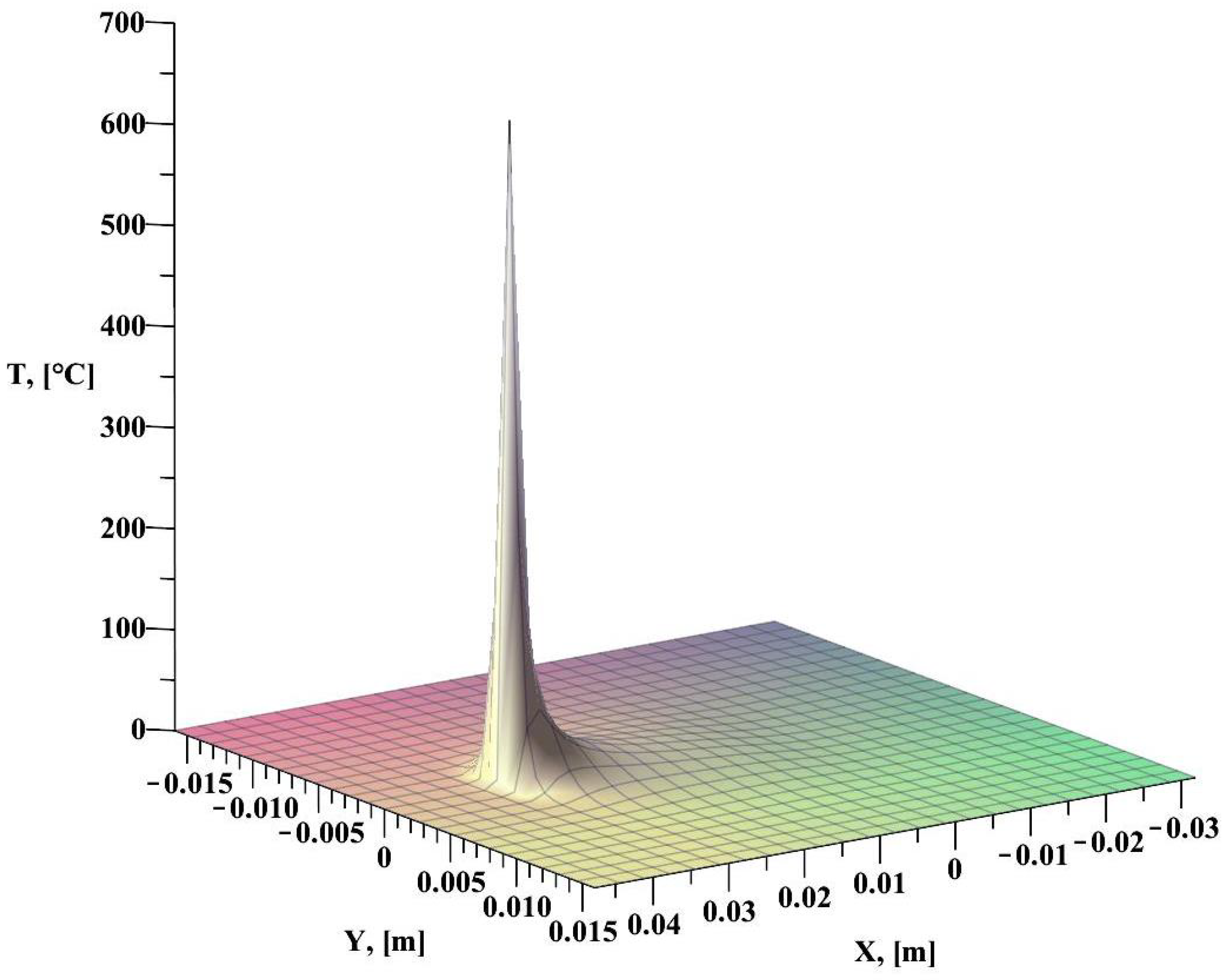

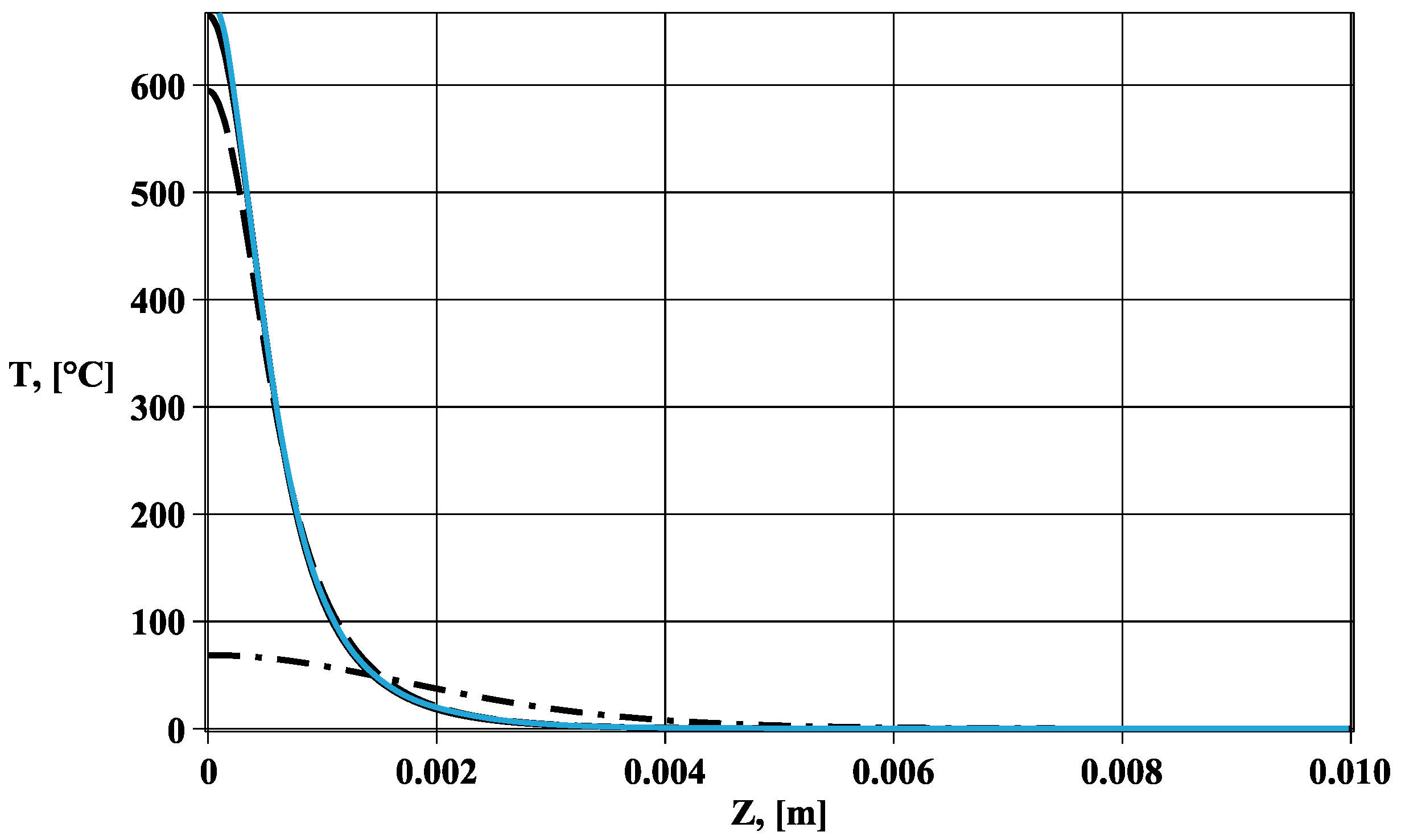

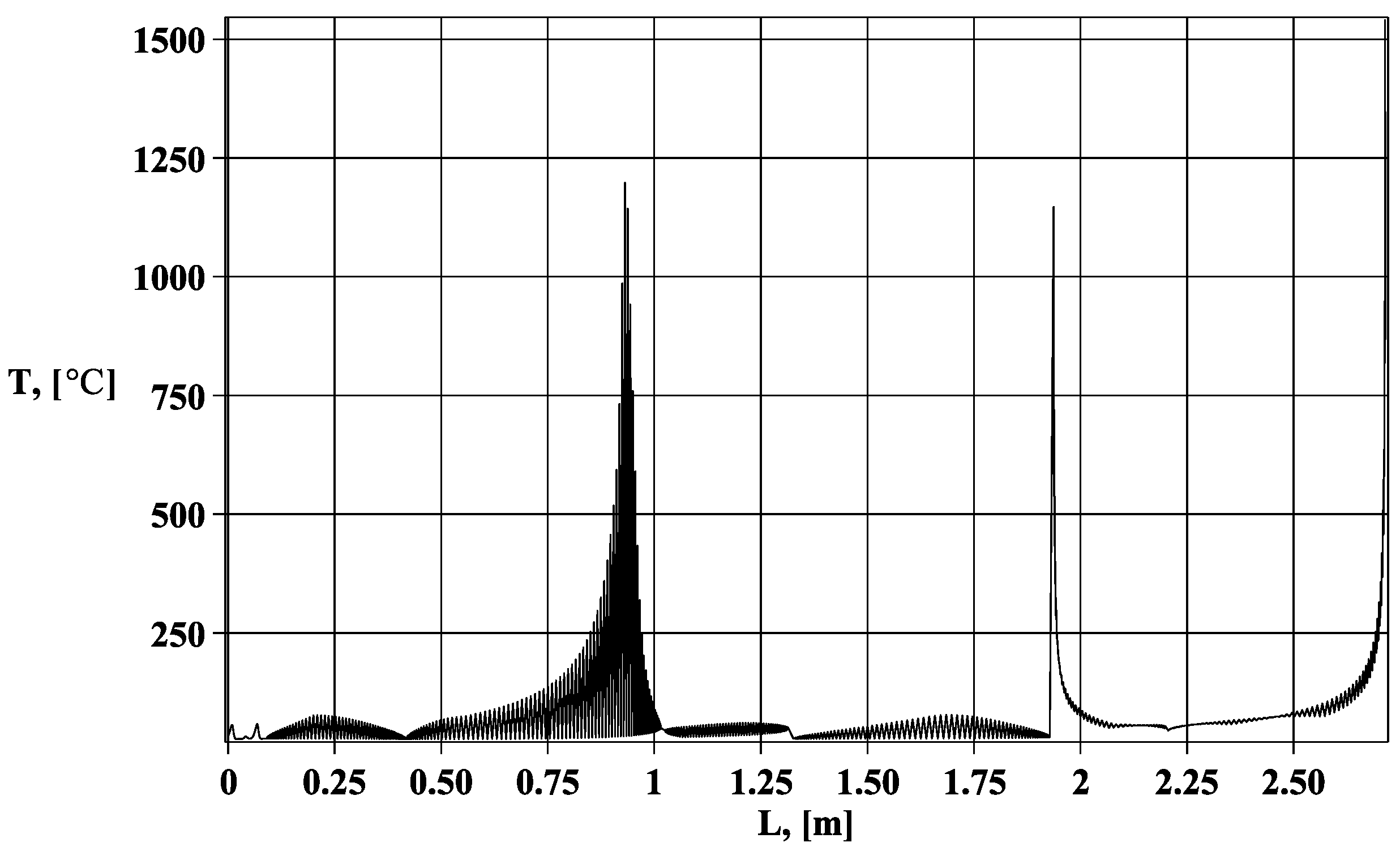
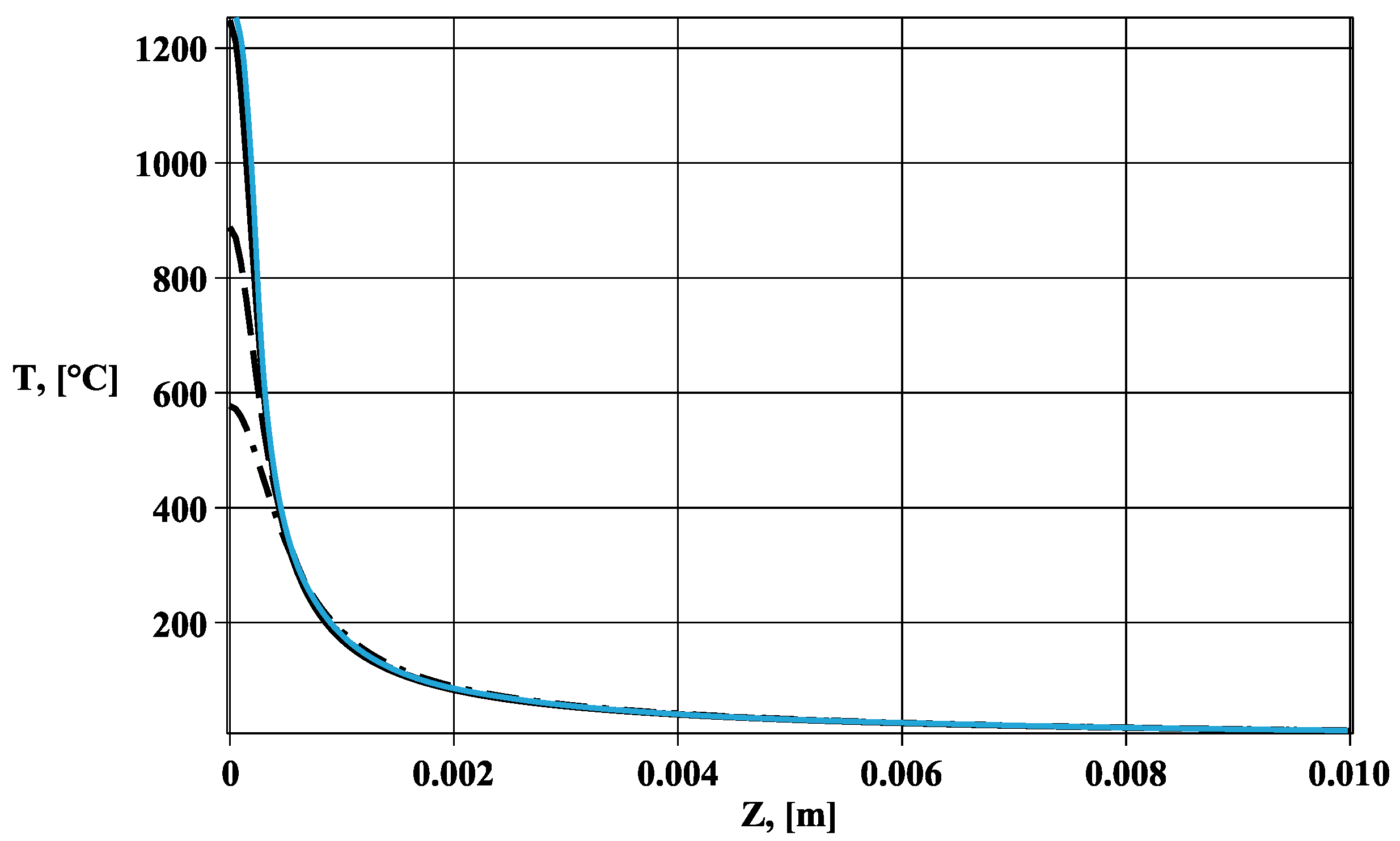
Publisher’s Note: MDPI stays neutral with regard to jurisdictional claims in published maps and institutional affiliations. |
© 2022 by the authors. Licensee MDPI, Basel, Switzerland. This article is an open access article distributed under the terms and conditions of the Creative Commons Attribution (CC BY) license (https://creativecommons.org/licenses/by/4.0/).
Share and Cite
Orekhov, A.; Rabinskiy, L.; Fedotenkov, G. Analytical Model of Heating an Isotropic Half-Space by a Moving Laser Source with a Gaussian Distribution. Symmetry 2022, 14, 650. https://doi.org/10.3390/sym14040650
Orekhov A, Rabinskiy L, Fedotenkov G. Analytical Model of Heating an Isotropic Half-Space by a Moving Laser Source with a Gaussian Distribution. Symmetry. 2022; 14(4):650. https://doi.org/10.3390/sym14040650
Chicago/Turabian StyleOrekhov, Alexander, Lev Rabinskiy, and Gregory Fedotenkov. 2022. "Analytical Model of Heating an Isotropic Half-Space by a Moving Laser Source with a Gaussian Distribution" Symmetry 14, no. 4: 650. https://doi.org/10.3390/sym14040650





